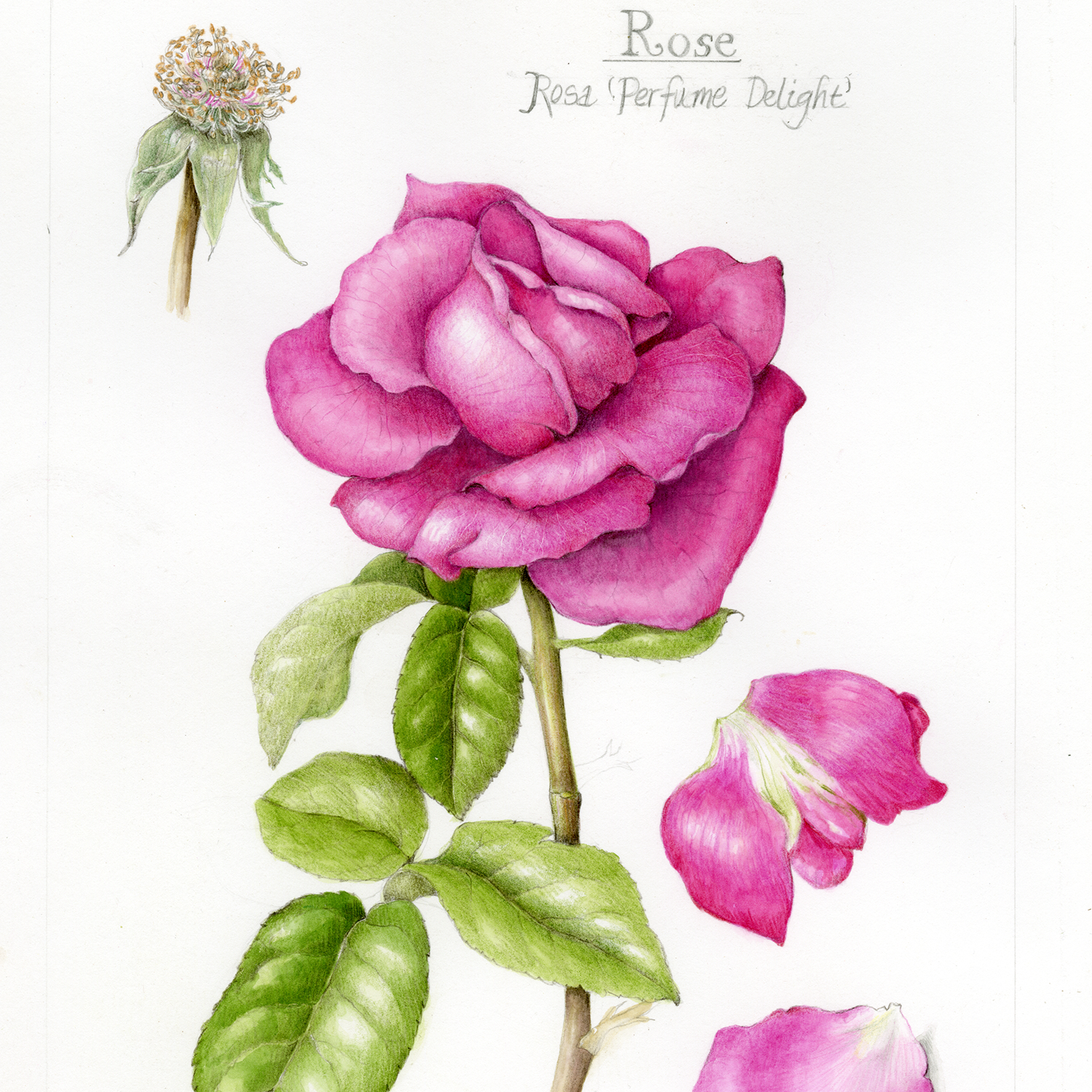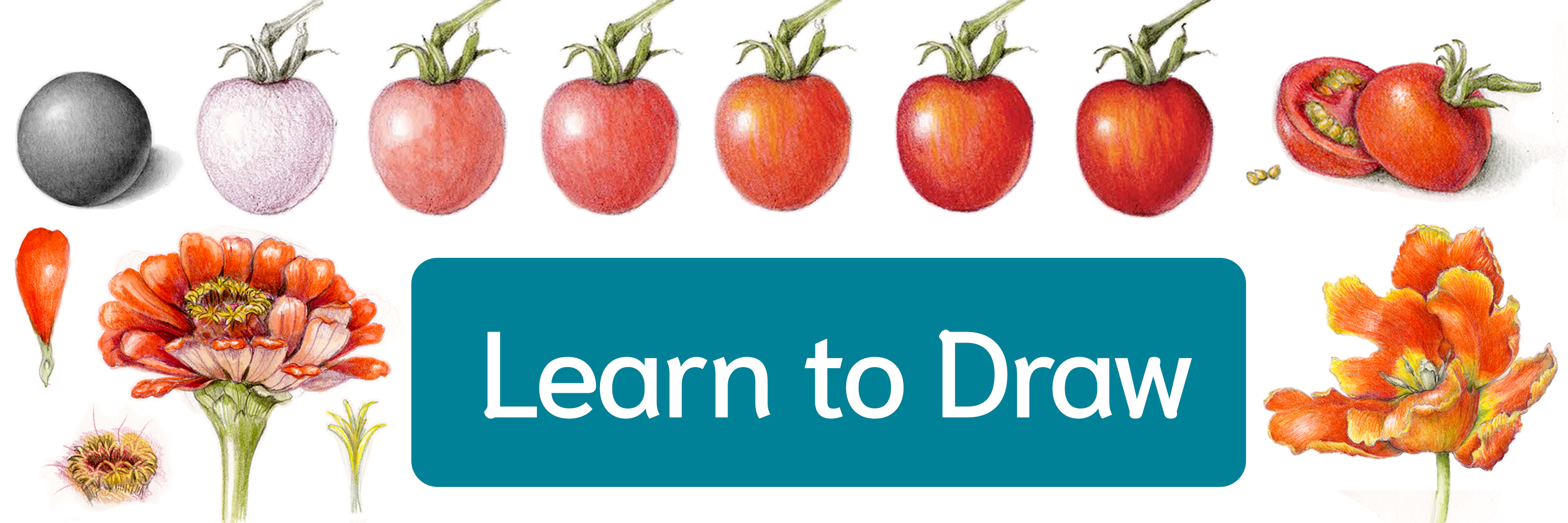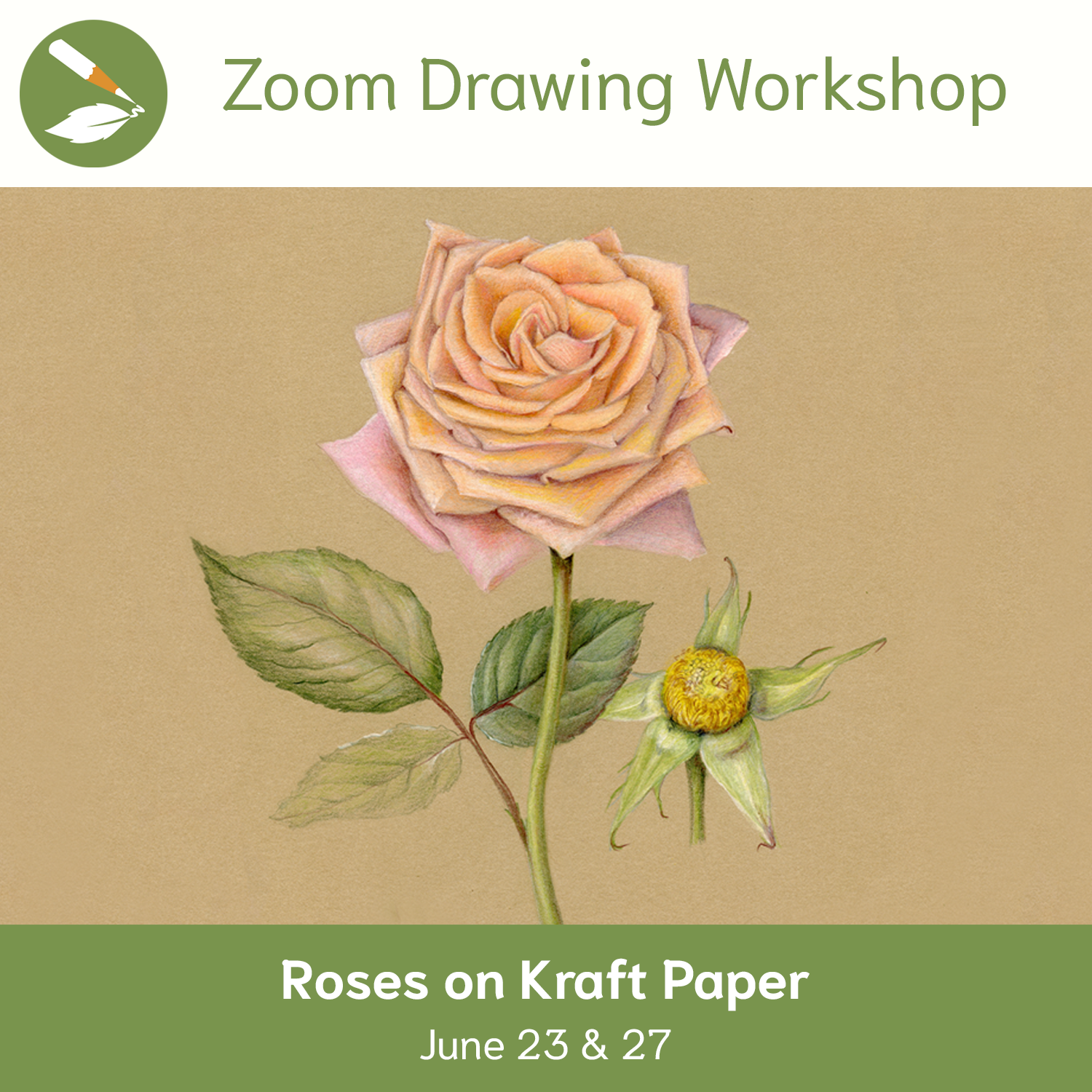Approach drawing a rose as a lifelong pursuit toward capturing a rose’s elegance; it is something that we practice over and over again. Don’t forget to take your time to smell the roses! Enjoy their sweet aroma, one of the most delightful benefits to drawing them.
Romantic Roses Zoom Drawing Workshop – Starts Feb. 5!
If you want the real-time play-by-play so you can see our whole process (not just the highlight reel of how to get it right the first time!), check out our Zoom Drawing Workshops! We show you how to make “mistakes” and learn from them. Learn more about why you’ll want to join our workshops here.
If you want to learn on tan kraft paper, check out our Roses on Kraft Paper Zoom Workshop here.
Quick Botany Lesson
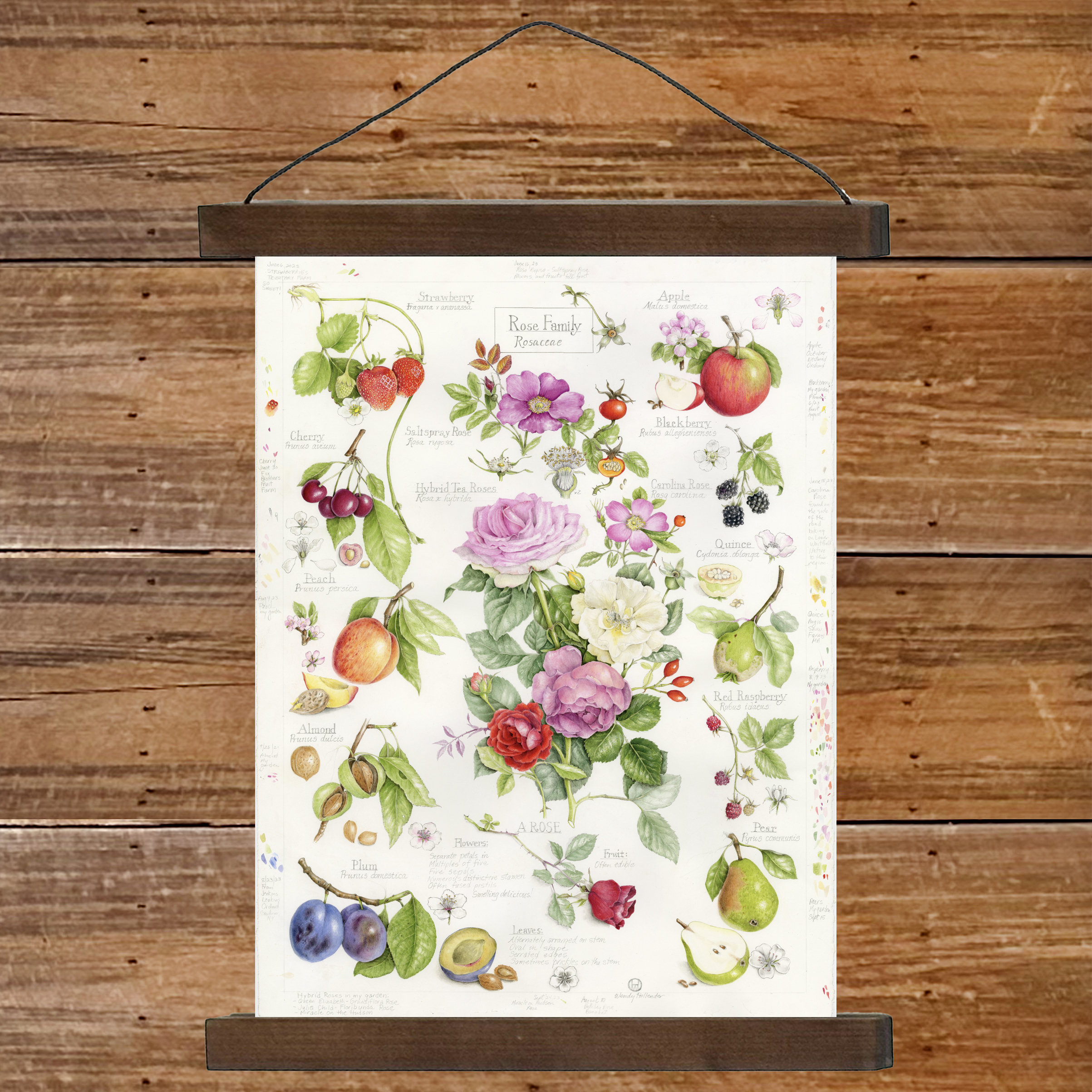
The Rose Family (Rosaceae) contains over 2,500 species, including rose, apple, almond, plum, cherry, strawberry, blackberry, and raspberry. Plants in the Rose Family share these traits:
Flowers
Separate petals in multiples of five
Five sepals
Numerous distinctive stamen
Often fused pistils
Smelling delicious!
Leaves
Alternately arranged on stem
Oval in shape
Serrated edges
Sometimes prickles on the stem
Fruit
Often edible (and delicious!)
Learn more about the Rose Family
With this in mind, consider highlighting the common features of this family in your drawing. For example, you may want to showcase the many stamen inside a rose or add multiple leaves to your composition to demonstrate their arrangement on the stem.
If you’re interested in the art history of roses, take a look at The Art of the Rose, from the collections of the RHS Lindley Library.
Structure
It is important to understand the rose structure and how lighting will help make your drawing descriptive and appear three-dimensional. Learn more about light source here for a better understanding of the huge role shadows and highlights play in creating a convincing 2D drawing that looks like as 3D as its live subject.
I love to capture the petals that are rolling, and I use a strong light source to help create this illusion of a dramatic-looking rose. (Check out Pierre Joseph Redoute to see the most beautiful and famous botanical paintings of roses. And look at these Contemporary Botanical Art Rose paintings to see what talented artists are doing today.) Click here for 4 Tips for Drawing Twists, Rolls, and Folds.
Select a Subject

If drawing a rose feels too intimidating, you’re far from alone. Often there are so many tightly-packed petals that drawing them all can be dizzying. My advice? Start SIMPLE.
Open roses with curling petals can be more challenging to draw, so we recommend beginners start with a tightly budded rose. (Experienced artists, choose any rose that inspires you!) Collect several roses so that some of them can be deconstructed for close examination of the various parts.
Before You Begin

Make sure you are all set for success – there’s power in preparation! If you want to warm up first, try these 5 exercises to stretch your drawing muscles.
To decide which perspective to draw, I consider the overall shape of a rose – the way petals hug the form, and then how they peel away in shapes that can be rendered as cylinders. I pay close attention to the details of overlapping petals and make sure to describe this in the beginning of my drawing. Position your subject to give a good view of a rose blossom with lots of contrasting dark areas of shadow versus areas highlighted by light source.
The shiny leaves have a curvy surface also, creating contrasting lights and shadows. For help with shiny leaves, click here.
Tutorial: How to Draw a Rose
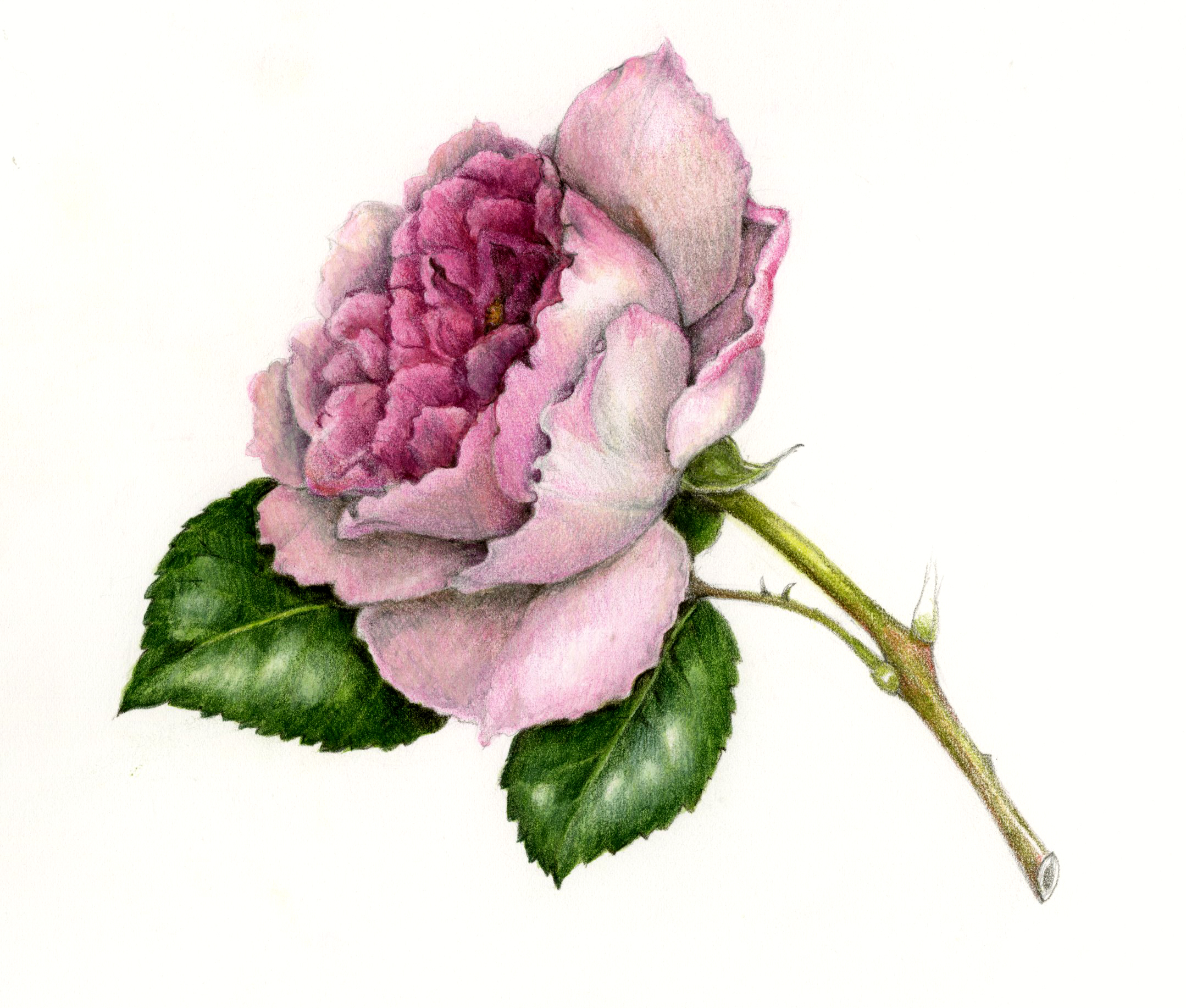
Everyone has their own way to draw and paint, and I encourage you to try your own! Here are the steps I use to draw and paint a rose:
Step 1: Practice Petals
Begin with a petal or a few petals of varying sizes from the inside and outside of the flower. Match the color and overall shape and draw the irregular edges. Practice painting and drawing a petal and then you will be ready for an entire rose! (Try this Single Petal Practice with your rose petal to get started.)
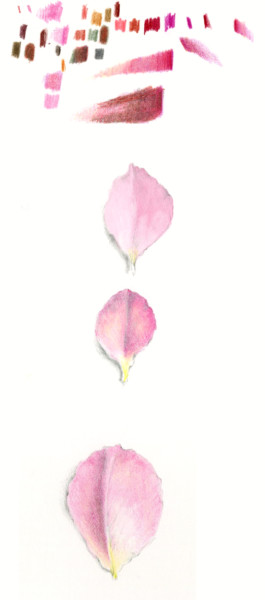
Step 2: Concept Drawings of Roses
Create concept drawings for tonal variation with correct light source to get the overall feel. Do a few loose concept sketches to check light source and choose a view.
Get ready to spend several hours or even days on a drawing. Since a rose can keep opening as you work, putting your rose in the refrigerator can help preserve it.

Step 3: Measure a Rose Accurately
Measure an entire rose flower and outline it using graphite pencil. Learn more tips for accurate measuring here, and check out this video on measuring and flower shapes!
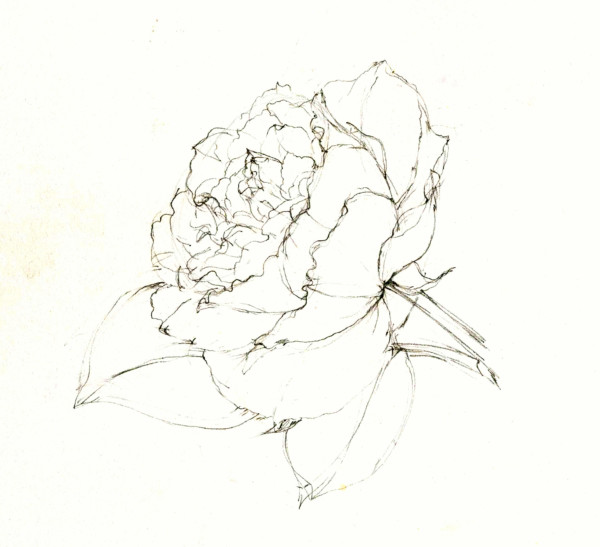
Step 4: Render a Grisaille Layer for Toning
Do a layer of toning, emphasizing the overlapping petals. If your flower is a pale color, start with light toning to keep your colors fresh.
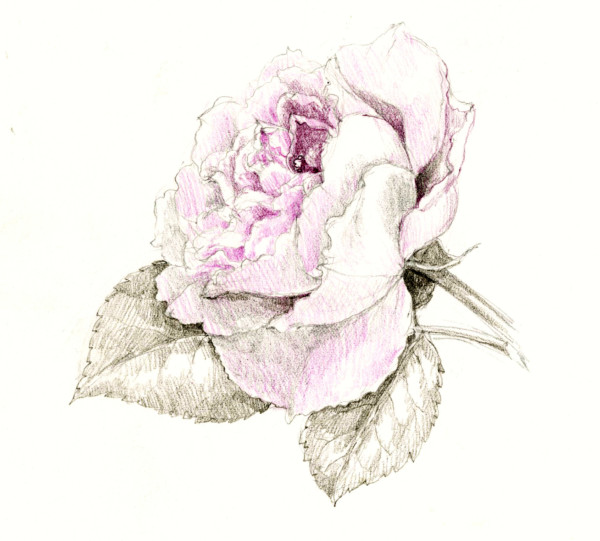
Step 5: Apply Watercolor Layer
Apply a layer of watercolor to add color, leaving the highlights as the white of the paper.
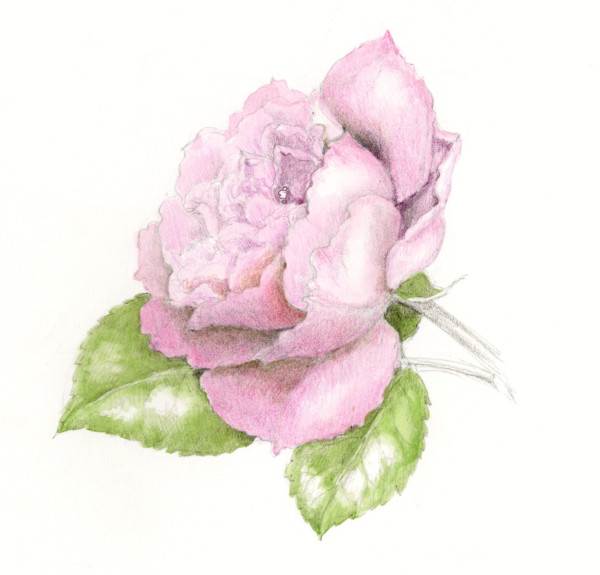
Step 6: Layers of Colored Pencil
Continue to layer color, alternating between watercolor and colored pencil. (Wait until the watercolor layer is COMPLETELY DRY before drawing on top with colored pencil.) Remember to maintain strong contrast on the light and dark areas. Add details and sharpen.
To create pleasing contrast around a pale flower, emphasize the dark, shiny, serrated leaves. Notice how the petals appear to be rolling and that there is an overall cup shape to the flower.
If you get frustrated or impatient, try some of these techniques to keep yourself occupied while your paint dries. Remember to ‘smell the roses’ (figuratively and literally!) as you draw and study!
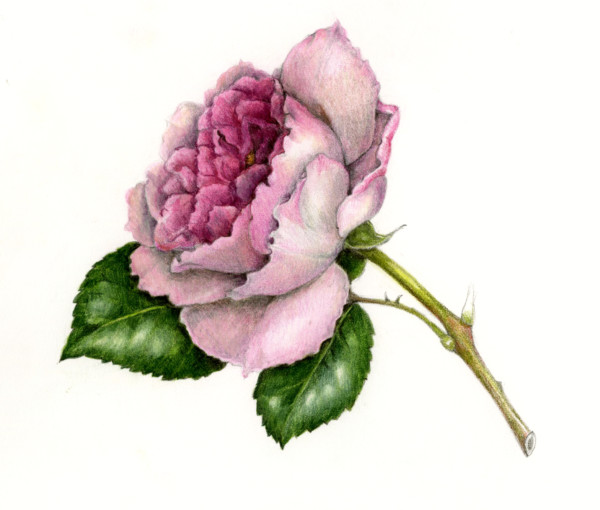
Want to learn more?
Romantic Roses Zoom Drawing Workshop – Starts Feb. 5!
If you want the real-time play-by-play so you can see our whole process (not just the highlight reel of how to get it right the first time!), check out our Zoom Drawing Workshops! We show you how to make “mistakes” and learn from them. Learn more about why you’ll want to join our workshops here.
If you want to learn on tan kraft paper, check out our Roses on Kraft Paper Zoom Workshop here.
Here is one part of our instructional videos about how to draw a rose from our online course, The Practice of Botanical Drawing.
Or try our Joy of Botanical Drawing Video Lesson Companion: Draw a Rose!


